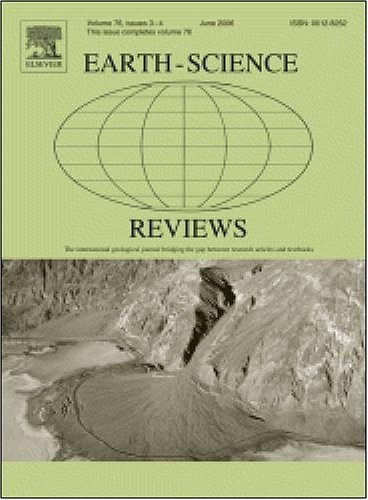Mid-ocean ridge jumps: Impacts, classification, and mechanisms
IF 10
1区 地球科学
Q1 GEOSCIENCES, MULTIDISCIPLINARY
引用次数: 0
Abstract
Mid-ocean ridge jumps (RJs) are key reorganization events in mid-ocean ridge (MOR) systems when a MOR segment shifts to a neighboring location, leaving the old segment inactive. Despite their global significance, current research predominantly concentrates on individual RJs or large jumps, lacking a systematic examination of RJ events. While many studies emphasize hotspot-ridge interactions as a primary driver, earlier work has also highlighted the role of plate motion changes and the potential for synergistic interactions between these two processes. This underscores the need for a more comprehensive investigation. This study systematically investigates RJs across 33 global sites, analyzing over 50 individual RJ events. We initially classify these events into three categories based on their geological settings: (1) in pure divergent settings, (2) in shear zones, and (3) in subduction-influenced zones. Our analysis elucidates the fundamental tectonic processes governing these events, identifying off-axis mantle upwellings and plate motion changes as the primary drivers of RJs across all settings. While mantle upwellings contribute to vertical movements and the weakening of the lithosphere, plate motion changes realign the horizontal stresses necessary for extensional forces and ultimately determine the final placement of new spreading centers. Rather than operating in isolation, these mechanisms interact synergistically, contributing to the intricate dynamics of RJ events. By reevaluating the significance of RJs on the evolution of MORs, our findings greatly contribute to the knowledge of complex structures within the oceanic domain and enhance our comprehension of Earth's crustal evolution.
洋中脊跃:影响、分类和机制
洋中脊跳变(RJs)是洋中脊(MOR)系统中重要的重组事件,当洋中脊段移动到邻近位置,使旧段失去活动。尽管它们具有全球意义,但目前的研究主要集中在个体RJ或大跳跃上,缺乏对RJ事件的系统研究。虽然许多研究强调热点-脊相互作用是主要的驱动因素,但早期的工作也强调了板块运动变化的作用以及这两个过程之间协同相互作用的潜力。这突出表明需要进行更全面的调查。本研究系统地调查了全球33个地点的RJ,分析了50多个单独的RJ事件。我们最初根据地质环境将这些事件分为三类:(1)纯发散环境,(2)剪切带,(3)俯冲影响带。我们的分析阐明了控制这些事件的基本构造过程,确定了在所有环境下,离轴地幔上涌和板块运动变化是rj的主要驱动因素。虽然地幔上涌有助于垂直运动和岩石圈的减弱,但板块运动的变化重新调整了拉伸力所需的水平应力,并最终决定了新的扩张中心的最终位置。这些机制并非孤立运作,而是协同作用,促成了RJ事件的复杂动态。通过重新评价rj对MORs演化的意义,我们的发现对认识海洋域内的复杂结构和增强我们对地球地壳演化的理解有很大的贡献。
本文章由计算机程序翻译,如有差异,请以英文原文为准。
求助全文
约1分钟内获得全文
求助全文
来源期刊

Earth-Science Reviews
地学-地球科学综合
CiteScore
21.70
自引率
5.80%
发文量
294
审稿时长
15.1 weeks
期刊介绍:
Covering a much wider field than the usual specialist journals, Earth Science Reviews publishes review articles dealing with all aspects of Earth Sciences, and is an important vehicle for allowing readers to see their particular interest related to the Earth Sciences as a whole.
 求助内容:
求助内容: 应助结果提醒方式:
应助结果提醒方式:


